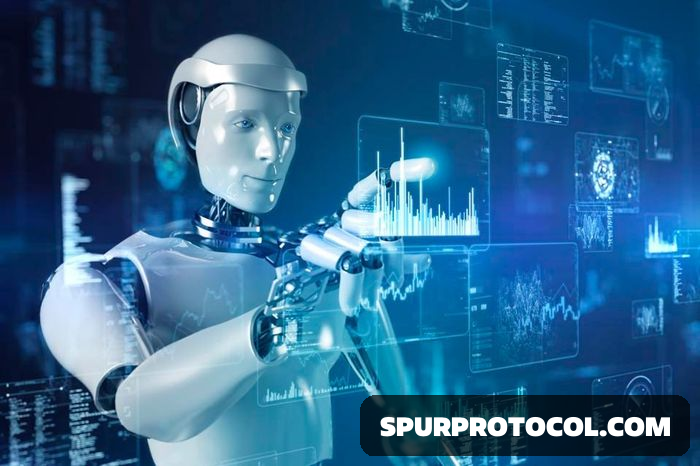Artificial Intelligence (AI) refers to the development of computer systems that can perform tasks that would typically require human intelligence, such as learning, problem-solving, decision-making and also perception. These systems use algorithms and data to enable machines to think and act like humans, often with the goal of automating tasks, improving efficiency and enhancing decision-making. AI can take many forms, including machine learning, natural language processing, computer vision & robotics. It has numerous applications across industries from healthcare and finance to transportation and education.
1. Learning:-
AI systems can learn from data, experiences & environments.
2. Problem-solving:-
AI systems can analyze problems, identify patterns, and develop solutions, often using complex algorithms and statistical models.
3. Decision-making:-
AI systems can make decisions based on data, rules, and constraints, and adapt to changing circumstances.
4. Perception:-
AI systems can interpret and understand data from sensors, such as images, speech, and text, and use this information to make decisions.
Types of AI👇🏻
1. Narrow or Weak AI:-
Designed to perform a specific task, such as facial recognition, language translation, or playing chess.
2. General or Strong AI:-
A hypothetical AI system that possesses the ability to understand, learn, and apply knowledge across a wide range of tasks, similar to human intelligence.
3. Superintelligence:-
An AI system that significantly surpasses the intelligence of humans, potentially leading to exponential growth in technological advancements.
AI Techniques👇🏻
1. Machine Learning ( ML ):-
A subset of AI that involves training algorithms on data to enable machines to learn from experience.
2. Deep Learning ( DL ):-
A type of ML that uses neural networks to analyze data, such as images, speech, and text.
3. Natural Language Processing (NLP):-
A field of AI that deals with the interaction between computers and humans in natural language.
4. Computer Vision:-
A field of AI that enables computers to interpret and understand visual data from images and videos.
AI Applications👇🏻
1. Virtual Assistants:-
AI-powered virtual assistants, such as Siri, Alexa and Google Assistant, that can perform tasks and answer questions.
2. Image and Speech Recognition:-
AI-powered systems that can recognize and interpret images, speech & text.
3. Predictive Maintenance:-
AI-powered systems that can predict equipment failures and schedule maintenance.
4. Healthcare:-
AI-powered systems that can analyze medical images, diagnose diseases, and develop personalized treatment plans.
5. Autonomous Vehicles:- AI-powered vehicles that can navigate and make decisions without human intervention.
AI Benefits👇🏻
1. Increased Efficiency:-
AI can automate tasks, freeing up human time and resources.
2. Improved Accuracy:-
AI can analyze large amounts of data, reducing errors and improving decision-making.
3. Enhanced Customer Experience:- AI-powered chatbots and virtual assistants can provide 24/7 customer support.
4. New Business Models:- AI can enable new business models, such as subscription-based services and data-driven decision-making.
AI CHALLENGES👇🏻
1. Data Quality:- AI requires high-quality data to learn and make decisions.
2. Bias and Fairness:- AI systems can perpetuate biases and discrimination if not designed and trained carefully.
3. Explainability:- AI decisions can be difficult to understand and interpret.
4. Job Displacement:- AI can automate jobs, potentially displacing human workers.
